You Can’t Fix Everything With A Fly Rod
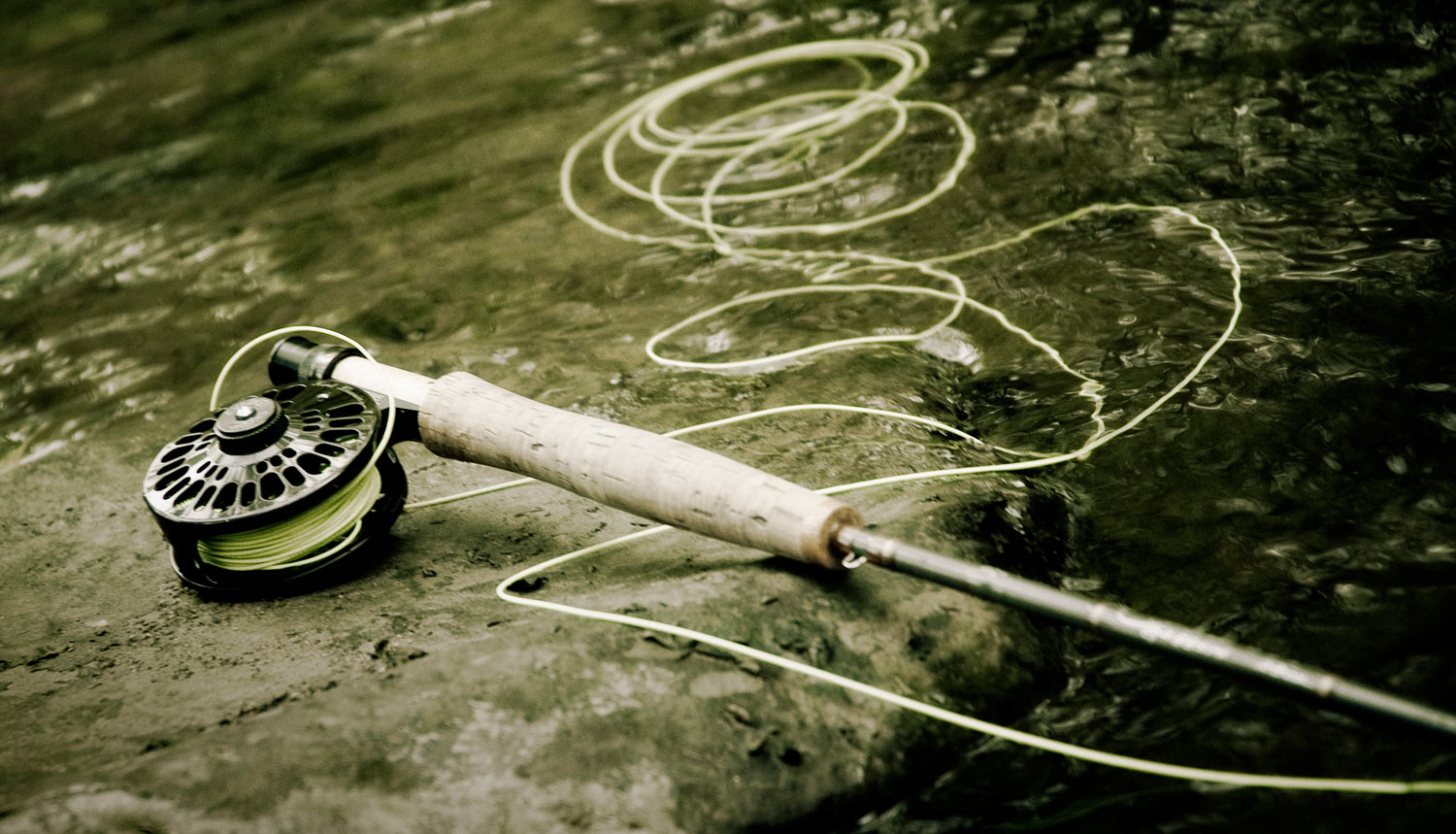
THIS STORY DOES NOT HAVE A HAPPY ENDING AND YOU SHOULD NOT FEEL LIKE YOU HAVE TO READ IT.
But it’s Thanksgiving and I feel like I need to share something personal. At the same time I feel like I need to apologize for doing it. Hopefully something good will come from it. When I started G&G I swore I was going to be painfully honest with my readers but I’ve kept this from you for months. My hope is that it will help someone.
I’ve said before that fly fishing saved my life. That’s not an overstatement. In dark and difficult times I have turned to the river as a refuge. I have found in the cool of the water and the quiet of the woods a place where I can make peace with myself. It has led me back from the edge on many occasions and that’s why I am such an evangelist for the sport. I feel like fly fishing can help almost anyone. It’s a tonic I feel compelled to share.
I haven’t written much about my godson, and I have never used his name. Brandon, who my wife and I call B, was born on my 25th birthday and there was a bond between us from the moment I saw him. He had a tough childhood, growing up without his mother. I looked after him when his dad worked. He stayed with me, traveled with me and later worked with me. There was never a time when he was, in my heart, anything less than my child.
B was a brilliant kid, funny and thoughtful, wise beyond his years. He was easy to love. His teenage years were hard and he was very withdrawn. He had few friends and spent most of his time playing video games. I tried teaching him to fish but he had no real interest in it. He would humor me and go stand in the river but he wasn’t really fishing. He’d have stood in a fire with me if I’d asked him to. Fishing just wasn’t his thing. It couldn’t do for him what it had done for me.
One night B decided he was done. He swallowed a handful of pills. Fortunately, he made a call before losing consciousness and was taken to the hospital. He survived, but he was in and out of the mental health system for the next year. When it seemed that his only option was long term hospitalization, my wife and I stepped in and took him into our home permanently.
B was a mess. He was on eight different psychiatric medications when we got him and was practically a zombie. We found a doctor who helped to get him off the meds and into therapy. Slowly he became his old self. It took years but B got back on his feet. It was the hardest thing Kathy and I have ever done, but it was much harder on B. I know he wanted to give up but he trusted me and did everything I asked of him. He worked so hard to survive.
Having B back in our lives was such a blessing. He was our kid and like any kid he was a giant, messy pile of life. He was huge pain in the ass and a constant joy. He was a comfort and a huge source of worry. He was a full time job and an endless vacation. He was everything I would have ever wanted my son to be. Everything but happy.
Read More »Fly Fishing Tips for Stocked Trout
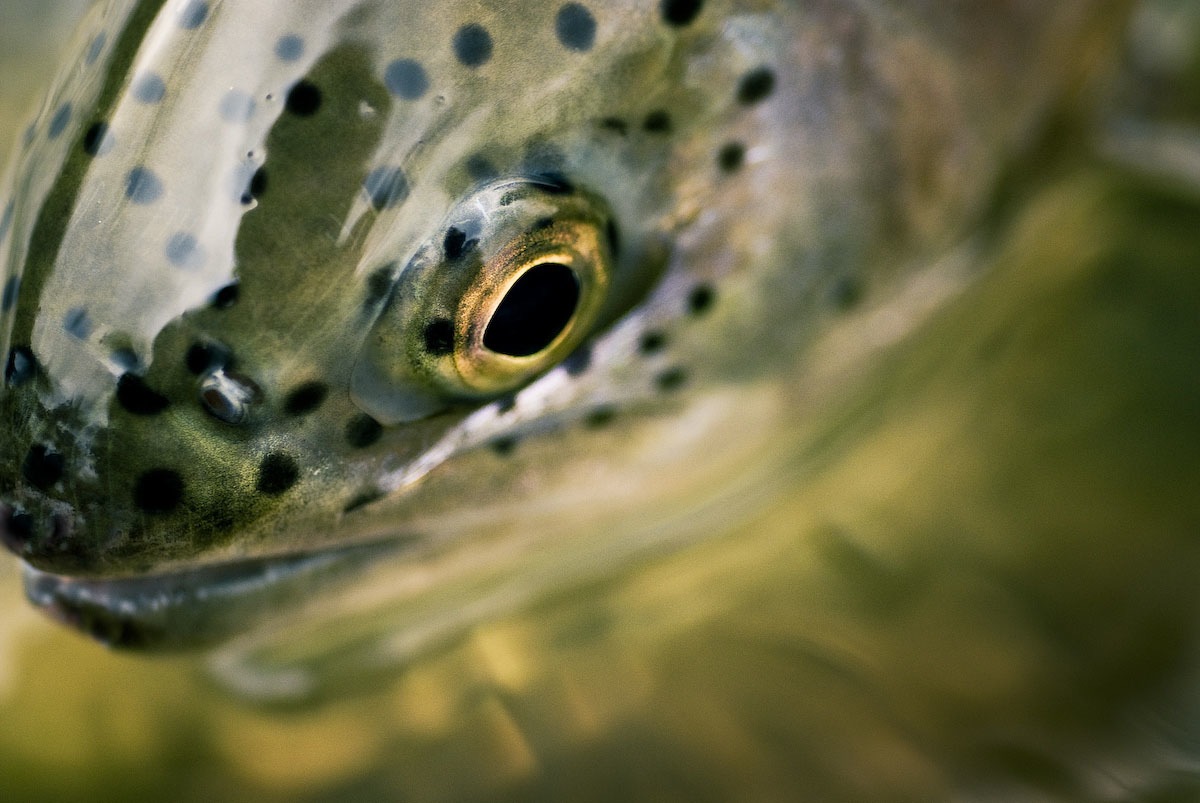
By Kent Klewein
MY FIRST MEMORY OF BRINGING A TROUT TO HAND WITH A FLY ROD TOOK PLACE ON A SEASONAL TROUT STREAM, LOCATED 45 MINUTES NORTH OF ATLANTA, GA.
It was a far cry from a trophy trout at 10-inches, but that freshly stocked rainbow trout, touched my eleven year old fishing soul to the core. I’ll never forget the excitement I felt watching that stocker chase down and eat my olive woolly bugger at my feet. It felt really good for a change, not relying on that plastic blue can of worms to get the job done. From that day forward, I never looked back, and I’ve moved on to become a respectable trout guide in my area and I’ve fly fished for trout all over the world.
A lot of fly fisherman would laugh at me if I brought that fishing memory up in conversation. Many wouldn’t be able to look past the fact that I was fly fishing for stocked trout that weren’t naturally born in a stream or river. If you happen to be reading this post and you’re one of those fly anglers that I’m referring to, just remember that we aren’t all blessed to have easy access to wild trout. For many of us, wild trout populations are so low (because of poor conservation and land management), it’s not even feasible for us to strategically target them, and if it wasn’t for stocked trout, we’d have no trout at all. If you’re fortunate to be blessed with wild trout populations where you live, don’t forget how that special that is, and please don’t make fun or belittle others who take pride in catching stocked trout. You just make yourself look ungrateful and worthy of having wild trout.
Before I get into my fly fishing tips for stocked trout, I’d like to take a moment to mention a couple of reasons I feel stocked fisheries can be good for the sport. For one, they’re a great place to introduce kids and newcomers to fly fishing for trout. Timed correctly, an angler with zero experience can have great success catching trout. Secondly, put and take trout waters provide great locations for anglers who like to harvest trout, to do so without having to illegally poach on special regulation or wild trout fisheries.
FLY FISHING TIPS FOR STOCKED TROUT
TIP 1: BIG FLIES AND BRIGHT FLIES ARE GENERALLY THE BEST CHOICE FOR FRESHLY STOCKED TROUT
If I knew I was going to be targeting freshly stocked trout (within a week or less of being stocked) I should really only need three types of patterns. The first would be a big Stimulator dry fly. Since stocked fish are conditioned to eating fish food pellets on the surface in the hatcheries, anglers can regularly take them on the surface with big dry flies. A dead drifted dry works really good, but sometimes, twitching or skating it at the end of the drift will also work. If the stocked trout aren’t liking your dry flies, I’d next try stripping a black or olive woolly bugger. A large profiled fly with an erratic action will really get the attention of freshly stocked trout, so much in fact, that they often will swim several feet to eat a big fly like a woolly bugger. And if the woolly bugger isn’t working I’d next rig up a tandem nymph rig and tie on a bright san juan worm or egg pattern off the back. Fluorescent colored flies are very hard for stocked trout to pass up, and they’re usually the ticket until most of the stocked trout have been landed on them multiple times. Try these tactics above for freshly stocked trout.
TIP 2: DON’T MOVE, CHANGE YOUR FLIES FIRST
Don’t always think the fun is over after a few fish. Many anglers move on to new water when all they need to do is change out their flies to something different to continue to catch stocked trout. This works really well when you’ve got crowded water and equally well when you’ve got kids that aren’t very mobile.
TIP 3: SEARCH OUT THE
Read More »Kirk Deeter’s One Man War On The Bobber
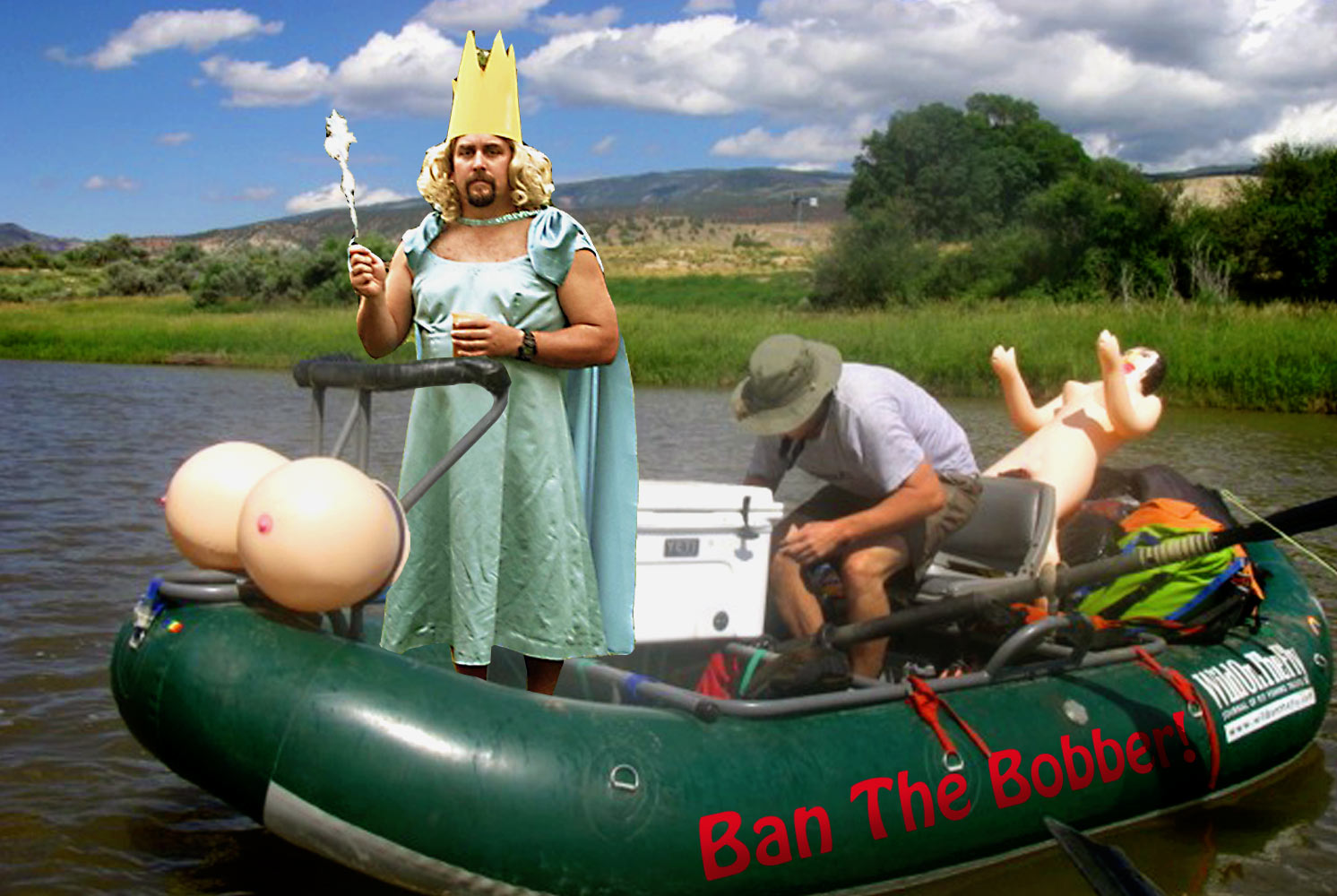
I love Kirk Deeter like a brother, but I’m afraid he has lost his mind.
Im his recent article, “We Need Some Bobber-Free Water, Now” Kirk calls for a ban on strike indicators on some trout rivers. I can’t help but respond to this idea, partially because Kirk has intentionally hung a target around his neck, and in the hope that reason will carry the day and maybe my friend will get some much needed psychiatric help! So let’s have some fun.
If you have not read Kirk’s article, I suggest you read it now. – “We Need Some Bobber-Free Water, Now”
Kirk, buddy, I’ve read your manifesto a couple of times and I think you need to come down out of the clock tower before someone gets hurt.
The assertion in this article is that, strike indicators ruin the water for dry fly anglers. That somehow nymph fishermen are cheating and that fishing an indicator is not real fly fishing and guides who allow their clients to use indicators are irresponsible. Kirk goes on to suggest that anglers who practice the “art” of dry fly fishing, the anglers he calls, “the most dedicated,” should enforce a “code of conduct” under which anglers using indicators would be second class citizens relegated to fishing poor water and conditions. A code which would establish a formal class system where guides and guided anglers would have to fish dry flies and bobbers would be reserved for lowly DIY anglers and beginners. Maybe Deeter himself will administer some kind of test to determine which flies, tactics and water anglers may fish according to merit.
Deeter goes on to malign “neophyte guides” and “newbies” for turning the grand old sport of fly fishing into a “numbers game” that’s all about “how many more than how.” and “about what more than why.” He even goes so far as to blame the decline of fishing on the Missouri over the last fifteen years on “the Bobber.” He suggests that indicator anglers are killing fish disproportionately, while he seems to feel it’s ok to target fish on redds as long as you use a dry fly.
Tell me Kirk, have you ever looked at the old B&W photos of our proud forefathers, holding their expansive stringers of huge trout? Why do you suppose fish limits were created in the first place? If nymphs and bobbers are the recent inventions of neophyte guides and their newbie clients, how were those old fellows in the photos killing all of those fish? Harpoons? Or perhaps dry flies?
Today’s bobber-lobbing fly anglers are the same ones you’ll see on Facebook holding their fish in the water, not by the gills or on Twitter, rallying to fight the Pebble Mine. They are, in larger numbers than ever before, women and teenagers, environmentalists and activists. Even when they are a “twenty-something guy with a beard and a trucker hat” they are breathing new life into fly fishing. It was the old guard, the Thurston Howell III crowd and their elitist, private club ethics that almost killed fly fishing. Not the bobber.
Deeter’s argument simply doesn’t hold water. “I’m 100 percent convinced that in some rivers trout only eat tiny nymph patterns because they are bombarded with nymphs all day, every day. Give them a break, and I’m sure they’ll readjust to eating dry flies,” he argues. Come on Kirk? I know you’re smarter than this. Fish are only eating nymphs because they see so many nymphs? That makes no sense at all. If everyone else is fishing nymphs, shouldn’t that make your dry flies that much more appealing?
The truth is very simple.
Read More »Social Media, The Best Thing To Ever Happen To Fly Fishing

THOUSANDS OF GALLONS OF INK HAVE BEEN SPILLED AND BILLIONS OF PIXELS HAVE FLASHED ABOUT THE EVILS THAT SOCIAL MEDIA, AND THE INTERNET IN GENERAL, ARE PERPETUATING ON THE SPORT OF FLYFISHING.
I can’t tell you how many rants, posts, articles, captions and blurbs I’ve read that contend, in some way, that some part of the Internet is ruining the sport we all love so much. “It just encourages Grip and Grins.” they shriek. “It’s making flyfishing into a competition!” they scream. “It’s just a bunch of people trying to get Internet famous!” they howl. And they are right. All of those things do happen on the Internet. They also happen in the flyshop, around the campfire and over beers. There isn’t any way to deny that some people use social media and the Internet to try to make themselves look like master anglers. Hell some of them ARE master anglers promoting themselves (and the sport).
The fact is, in a real and fundamentally important way, the Internet is the greatest thing that’s ever happened to flyfishing. The ramifications of the changes it is creating are still waiting to be wholly felt, but have already influenced everything from public policy to international politics to fish care and handling. More importantly, the scale and scope of the reach of flyfishing continues to grow. The exposure of the sport is no longer limited to Brad Pitt or grandpa. It’s now an organic and fluid mechanism defined by the collective image set forth by all of us. We’ve been given the power to reach into places that would have never known flyfishing and to do it in ways that don’t involve stuffy meetings or AARP-sponsored events. And we’ve done a helluva job; taking flyfishing from the purview of only rich old white men into something not only accessible, but promoted to everyone. Are we perfect? Hell no. But we are damn good.
Many years ago I was standing on the bank of a small muddy river in South Eastern South Dakota. I had a Cabella’s 6 weight rod and reel combo that my father had given me. Don’t ask what line or leader I was using. I wasn’t that advanced yet. On my hip was an ammo belt that I’d stuffed with my 2 tippet spools, fingernail clippers (because that guide in Colorado used nippers so I knew using my teeth like I had all my life wasn’t classy enough for flyfishing) and a flybox with 12 random flies in it. I’d tied on a yellow foam beetle and was attempting to cast it between ice sheets on a cold March day. See, I knew you could catch bluegill on flies. The guide had told me so. He’d also said he preferred a yellow beetle to get them. So there I was trying to get a drift with my leader dragging on the ice and not understanding why the fish weren’t biting that day.
For years I struggled to learn how to flyfish in warm water.
Most was pure trial and error. I’d try stuff; it wouldn’t work… so I’d try other stuff. I was the only person in the world, as far as I was concerned, fishing warm water with flies and I did it incessantly. You know that quote attributed to Einstein about insanity being a person doing the same thing over and over and expecting a different result. Well, I was certifiable at that point.
Sunday Classic / The Flats, Light Bottom vs. Dark Bottom
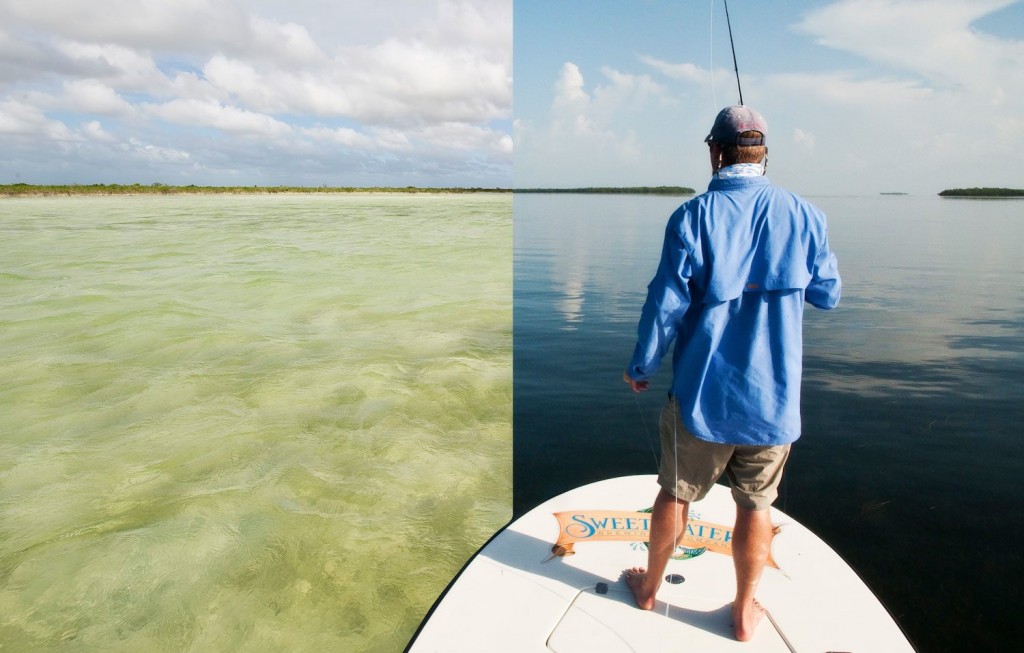
Water temperatures and seasons play an important role for fly fishermen fishing the saltwater flats. Saltwater fish prefer to utilize different types of flats throughout the year to maximize their comfort and food intake. When I was new to the saltwater side of the sport, I never gave it much thought on why my guide was choosing to take me fishing on a light colored sandy flat, versus a grassy or dark bottom flat. It wasn’t my expertise, so I just went along with everything. Quite a few years have past since my rookie fishing days in saltwater. I’ve logged many more trips on the saltwater flats, and I’ve taken the time to pick the brains of the saltwater guides, so I could better understand why they choose one type of flat over the other during the year. Below is a quick recap of information on what I’ve gathered from numerous saltwater guides on this subject. Fly fishing on saltwater flats is very similar to bass fishing on large reservoirs, in the fact that water temperature is critical in both for consistently locating fish and productive water. Both freshwater and saltwater fish strive to maintain stable underwater enviornments. When water conditions change, so does the habits and behavior of the game fish we’re targeting, as well as, the food sources they prey upon. Fly fisherman that understand this, are quick to match their fishing tactics with the present conditions on the water, because they know it’s critical for staying on top of the fish and in the action. Light bottomed flats reflect a large portion of the sunlight. When water temperatures are at the extreme end of the comfort zone of saltwater fish, generally during the months of July, August and September, fish will often prefer to frequent light bottomed … Continue reading
Read More »Saturday Shoutout / Public Lands, Public Hands
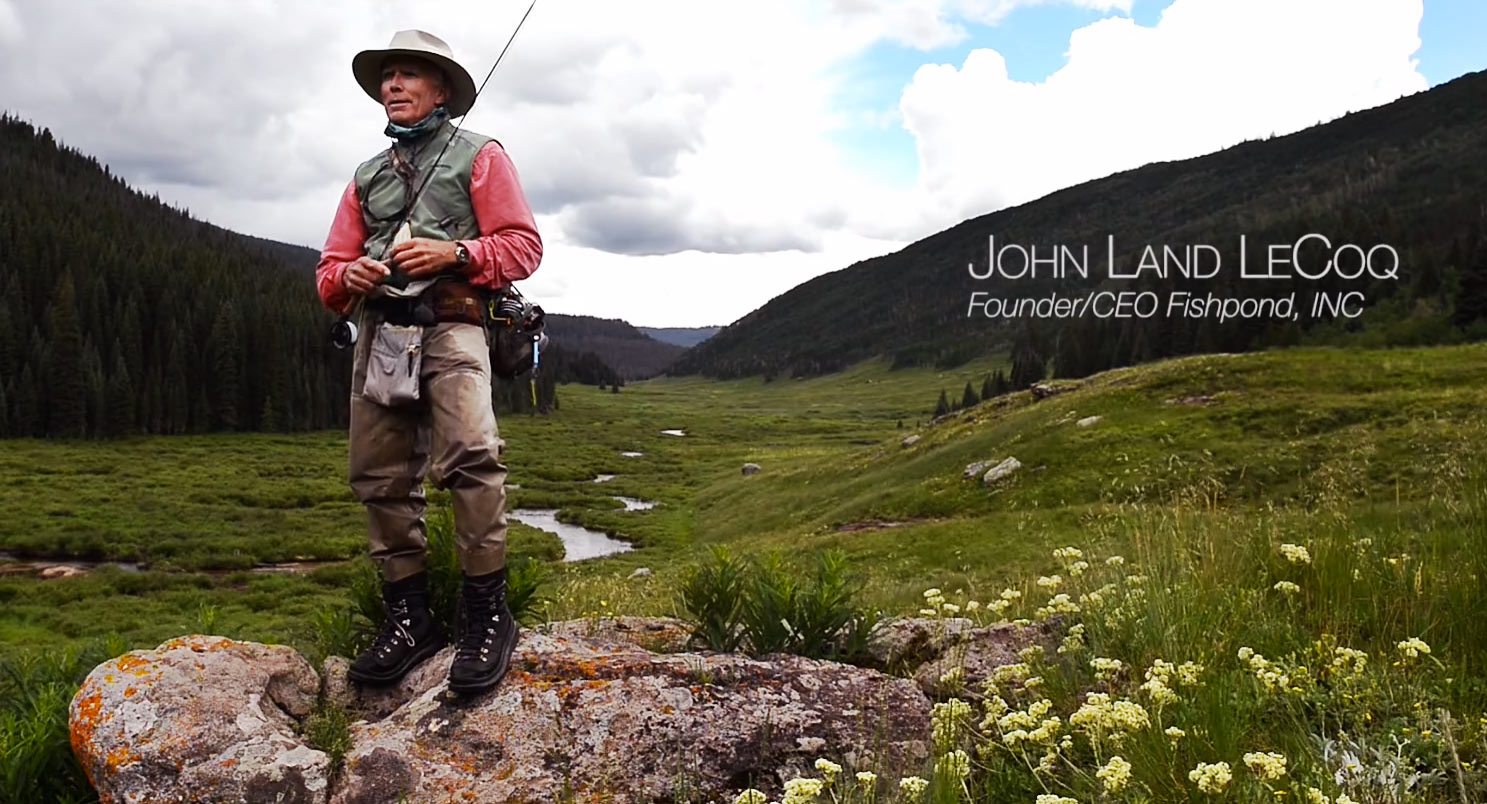
Congress is considering a bill to sell America’s public lands to the highest bidder.
The United States of America has has the greatest collection of public lands on the planet. Within them are the waters in which we anglers we spend the better parts of our lives. We can not afford to have this precious resource sold out from under us.
Check out this short film by Trout Unlimited, featuring John LeCoq of Fishpond. I’m sure you will agree that we can and must preserve our American birthright. Got to the TU page to see how you can help. http://www.tu.org/public-lands-action
Read More »New Reels From Allen Flyfishing
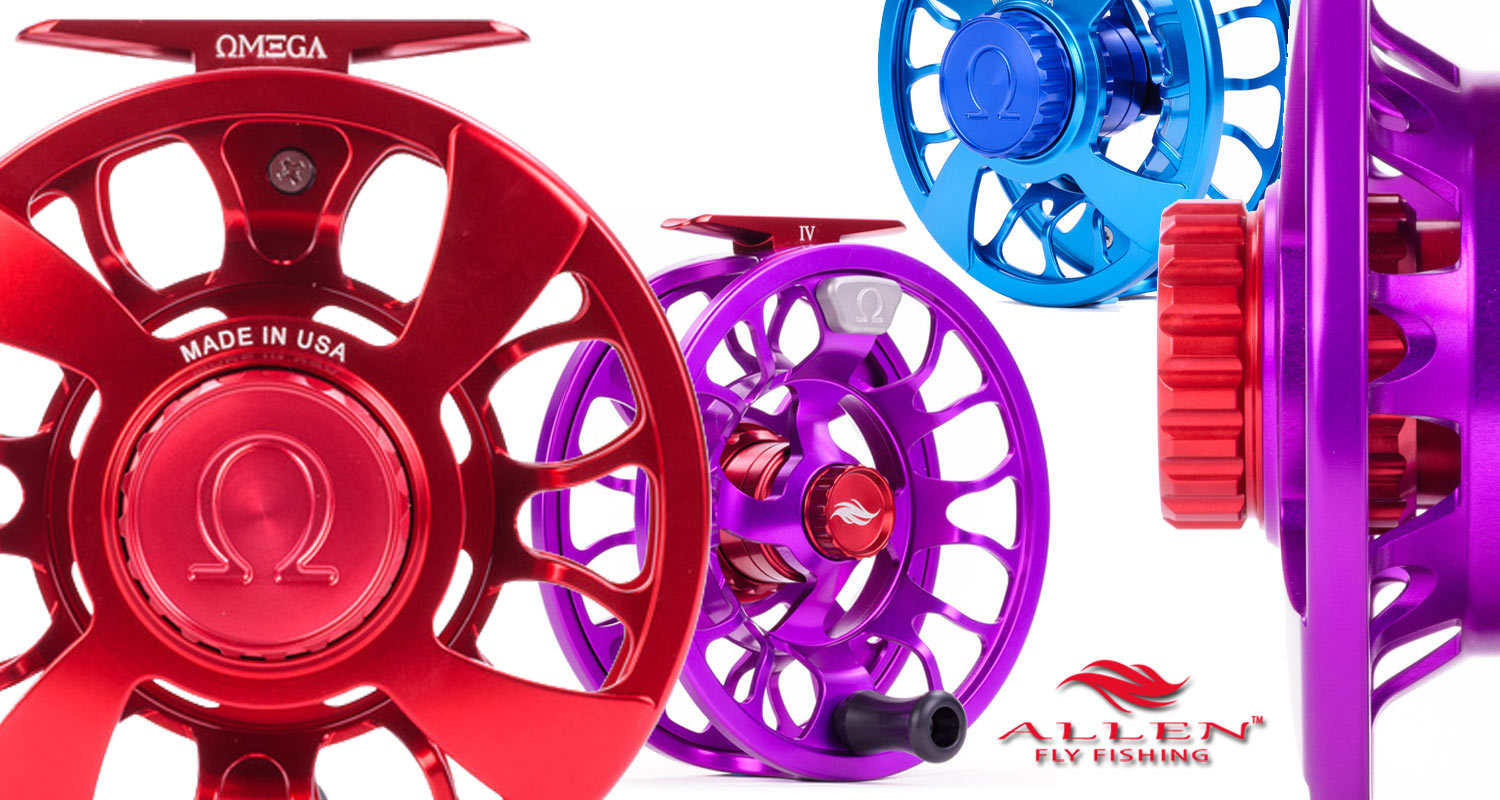
Allen brings it home to the USA.
Allen Flyfishing has been getting plenty of attention with their colorful fly reels aimed at the angler on a budget. The import models, starting as low as $139 for freshwater and $209 for salt, offer the some sweet features at a intro level price.
This year Allen is introducing an made in the USA reel. The Omega, made in Detroit, is a powerful and stylish saltwater reel for $575. I’ve had the chance to fish the Omega and I’ve been very pleased with its performance.
WATCH THIS VIDEO FOR ALL THE INFO ON THE 2015 ALLEN FLY REELS.
Read More »Fly Fishing Karma
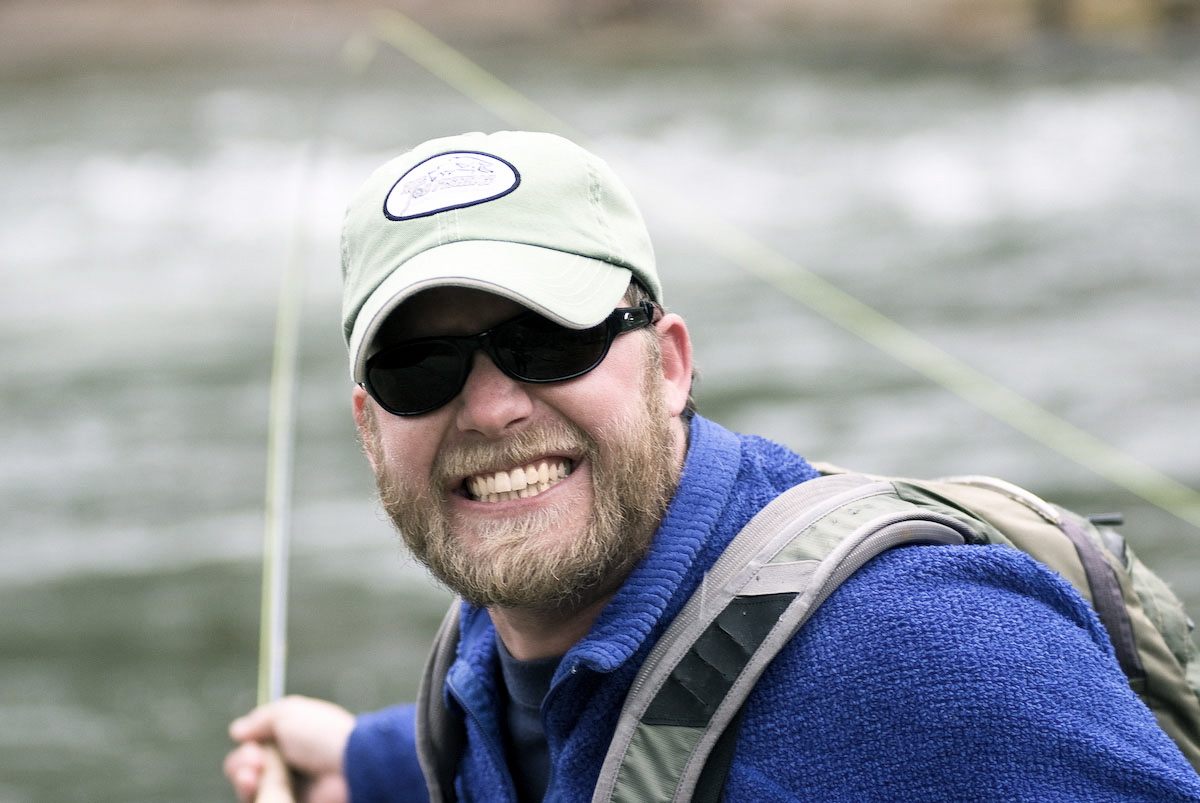
By Kent Klewein
The feeling of losing a big trout can be heart breaking.
Especially when it’s a fish of a life time, but it happens to all of us, some just more than others. Most of the time fish are lost because of angler error during the fight, but every once in a while, there’s really no clear identifiable explanation, and all we can do to move forward with a positive attitude, is believe some fish just aren’t meant to be caught. Recently, I had a day on the water where the fly fishing was absolutely epic but no matter how hard my client and I tried, we kept unbuttoning our best fish right before I could get a net on them. At the end of the day, when all the cards had been laid out, I had an epiphany. Below is a break down of the day and my new theory on why certain fish are lost and others are landed.
Some time ago, I had a wonderful day on the water guiding my client David Joiner. He turned out to be a dream client, the kind of client most guide’s would clone and fill up their calendar with if they had the opportunity. The thing that made David such a pleasure to guide was the fact that he was there, first and foremost, to learn. David wanted to catch fish, but it was far more important for him to learn the how-to, so he could then go out and have success fly fishing on his own. This allowed me to really slow down and be thorough with my teachings, and I took the time to describe every detail of the set up and presentation for each spot we fished. I remember early on, David saying to me, “Your the first guide that’s really taken the time to break everything down for me, and that’s what I need if I’m going to take my fly fishing skills to the next level.” His comment of appreciation felt good, and he provided me the freedom to pass on my wisdom any way I saw fit, even if my ramblings ended up costing him some fishing time on the water. If you show your guide your appreciation for his knowledge, he/she will work twice as hard for you and provide you the key fly fishing tips most anglers find difficult to comprehend in books.
A few hours into the day, as I was teaching David how to pre-scan water for trout, I spotted a lone riser out of my peripheral vision.
It rose up from the bottom to inspect something on the surface and it immediately dropped back out of sight, camouflaging itself in the darkness of the deep water. I’ve got pretty good trout eyes, but this twenty-inch trout proved that it doesn’t matter how good an angler’s eyes are at spotting fish, they never
Read More »Nymphing in the Discotheque

by David Grossman
I am not now nor have I ever been European.
Like a lot of my red-blooded American friends, I nymph a lot of ways, but always with an indicator. Always. There’s something comforting about having a colorful (and in my case cylindrical) point of focus for my sub-surface proclivities. The status quo is the status quo because changing the status quo seems to be a pain in the ass most times. My fishing should never be a pain in the ass. That is until you get said ass handed to you by a buddy nymphing sans indicator.
Yes, it pains to me admit my buddy’s Euro rig cleaned my American rig’s clock.
I adjusted depth, flies, my underwear, and anything else I could think of, all to no avail. America sucked hard that day my friends, and a bald eagle actually cried while Uncle Sam got repeatedly kicked in the junk on those banks. My non-European friend would go back through the hole that I just pulled a blank on and euro rig up at least a couple fish. Every hole. Damndest thing I ever saw. From my little knowledge on Euro-nymphing, this is pretty much how the technique came to this country. Our U.S. fly fishing team was tired of getting whacked at international competitions by our cheese-eating cousins across the pond, and in an “If we can’t beat ‘em, join ‘em” kind of scenario, adopted what I will now refer to as naked nymphing (saying “Euro” all the time can grow tiresome).
I am now in desperate search of a
Read More »Sunday Classic / Presenting Your Fly To A School Of Bonefish
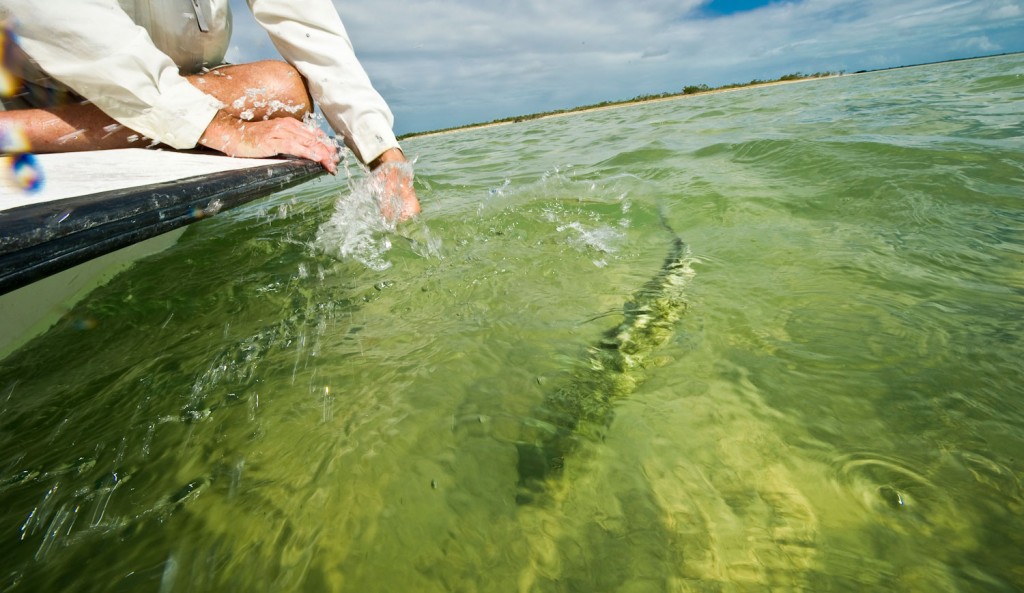
Bonefish are on the move! Presenting your fly to a school of bonefish has to become second nature. There is often not time to make a plan. The successful angler is one who can make split second decisions and place the fly quickly and accurately. It’s a little like shooting a shotgun. You have to know how far to lead the fish in a given situation and you have to be able to picture that lead to know where your target is. It’s a skill that takes time to master but hopefully this video will set you off in the right direction. Our friend Joel Dickey is back to help you see your target. Louis Cahill Gink & Gasoline www.ginkandgasoline.com hookups@ginkandgasoline.com Sign Up For Our Weekly Newsletter!
Read More »